January/February 2025 newsletter
Nurturing family connections
In early learning environments, building strong relationships with families is crucial for a child’s sense of well-being. At a young age, children’s development is deeply influenced by their relationships. When educators work closely with families, they create a strong support system that helps children grow in all areas—emotionally, socially, cognitively and physically.
Families are their children’s first teachers. Parents and caregivers understand their child’s interests, strengths, challenges, and even their preferred ways of learning. If families and educators share their knowledge and observations with one another, they can work together to create the best possible learning experience for the child.
Another important benefit of family involvement is that it builds a sense of community. When families feel engaged in their child’s early learning program, it strengthens the child’s sense of belonging. This sense of community can lead to stronger relationships between students, educators, and families, creating a supportive environment where everyone works together to help children succeed. By respecting and including families, educators help create an environment where all children feel recognized and celebrated for who they are.
"Children must never work for our love; they must rest in it."
Dr. Gordon Neufeld, developmental psychologist
The relationship between families and early learning environments plays a key role in a child’s development. When educators and families work together, children are more likely to feel secure, engaged, and supported. By valuing and strengthening the bond between home and the early learning program, educators and families can work together to provide the best possible foundation for children.
Communication is the key
Effective communication between early childhood educators and families is essential for creating a supportive and nurturing learning environment for children. Open, clear, and respectful communication helps to build strong relationships that foster the child’s growth and development both at home and in the early learning program. Here are some factors that contribute to positive communication with families:
- Be consistent: Provide regular updates about each child’s progress, activities, needs and interests. Encourage families to share information with you, too!
- Be welcoming: Encourage regular and open dialogue to help families feel comfortable sharing their thoughts and concerns. Ask questions, and be open to hearing each family’s perspectives.
- Be respectful: Effective communication involves being culturally sensitive and respectful of diverse family structures. Recognizing and honouring differences in family backgrounds and communication styles will lead to more inclusive conversations.
"Strong relationships are built on trust and communication. But if there is no communication, there can be no trust."
Simon Sinek, author and speaker
Here are two resources on how to strengthen communication with families:
- Effective communication between families and early childhood staff:
https://bcfcca.ca/wp-content/uploads/2014/06/Effective-Communication-Between-Families-and-Early-Childhood-Kids-Matter-PDF-File.pdf - Practice guideline on communication and collaboration with families:
https://www.college-ece.ca/practice-guideline-on-communication-and-collaboration-section-2/
Resources to explore
The following websites provide principles and practices to build welcoming and responsive relationships with families:
- Helping children and families develop a sense of belonging:https://hub.exchangepress.com/document/helping-children-and-families-develop-a-sense-of-belonging/
- Five Rs for promoting positive family engagement:
https://www.naeyc.org/resources/pubs/tyc/winter2022/fiver-rs-family - Welcoming children and families to your classroom:
https://www.naeyc.org/resources/pubs/tyc/jun2009/welcome-children-and-families
- Practitioners and families together: encouraging positive behavior:
https://cccf-fcsge.ca/ece-resources/topics/challenging-child-behaviours-stress/practitioners-and-families-together-encouraging-positive-behaviour/ - More than a letter home: activities to welcome children and families to your program:
https://www.naeyc.org/article/letter-welcome-families - Building partnerships with families resource sheet:
https://cccf-fcsge.ca/wp-content/uploads/2020/05/RS_86-e.pdf
Do you know?
The British Columbia Early Learning Framework has a Guide for Families
The B.C. Early Learning Framework highlights the importance of families, and honours what families do to nurture their children’s growth and development in their home environments. The B.C. Early Learning Framework Guide for Families reminds us that families support their children by:
- Nurturing a sense of wellbeing to help their children learn about the world around them.
- Providing opportunities to engage with other children, adults, and materials in their homes, environments and communities.
- Creating opportunities to communicate ideas and participate in relationships with others through sounds, gestures and expressive languages such as moving, dancing, constructing, playing, or participating in drama, art, mathematics, science, music, and storytelling.
- Nurturing a positive sense of self-worth, self-awareness, and identity so children become confident individuals who contribute to their own wellbeing, and to the wellbeing of their family, community and society.
You can share this resource with families to help them learn more about the B.C. Early Learning Framework:
Book Nook
Sharing books about different types of families helps each child feel a sense of belonging. Here are some of our favourites (below) and a list of recommended reads: https://www.naeyc.org/article/books-about-families.
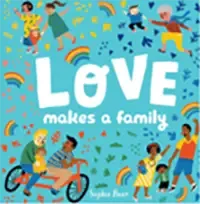
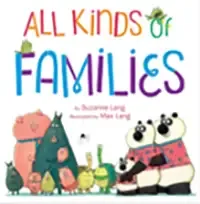
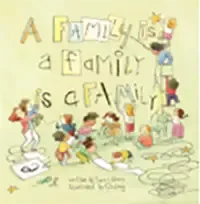
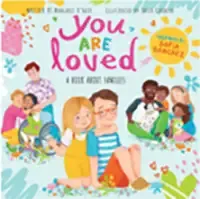
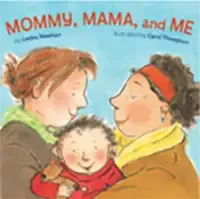
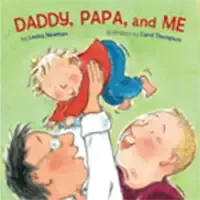
"The greatest thing we can do is to help somebody know that they’re loved and capable of loving."
Fred Rogers, children’s television host
Explore
Activity idea:
“My Family and Me” class book
Create a book about each family in your program. Children and their families will appreciate seeing themselves reflected and celebrated.
Materials:
- Binder
- Create a “My Family and Me” template, or a set of questions to provide to each family, such as:
- The people in my family are…
- Together, we like to…
- Our favourite foods are…
- My family is special because…
Directions:
- Send template or a list of questions/prompts home with each child.
- Ask families to spend time answering the questions with their child.
- Request a family photo from each family to include with their answers.
- Compile the pages into a binder to have at the program.
- Children will love reading a book about themselves and their families!
Remember that each family is different and unique! Make sure that the template or questions you use are inclusive of all kinds of families.
Grow
Families have the most important role in contributing to children’s wellbeing and learning. Families are the first teachers, the primary caregivers, and the knowledge-holders of their children. Families have the most important role in promoting their children’s wellbeing and learning. For all communities, learning often involves more than one generation. Elders and grandparents can be central to early learning programs, and their knowledge of cultural traditions and language can be of great benefit to children, families, educators and community.
(B.C. Ministry of Education, 2019, p. 16)
Critically reflective questions:
What does it mean to be in reciprocal relationships with children, families, and colleagues? (p. 69)
How do parents and families contribute to my program? (p. 71)
